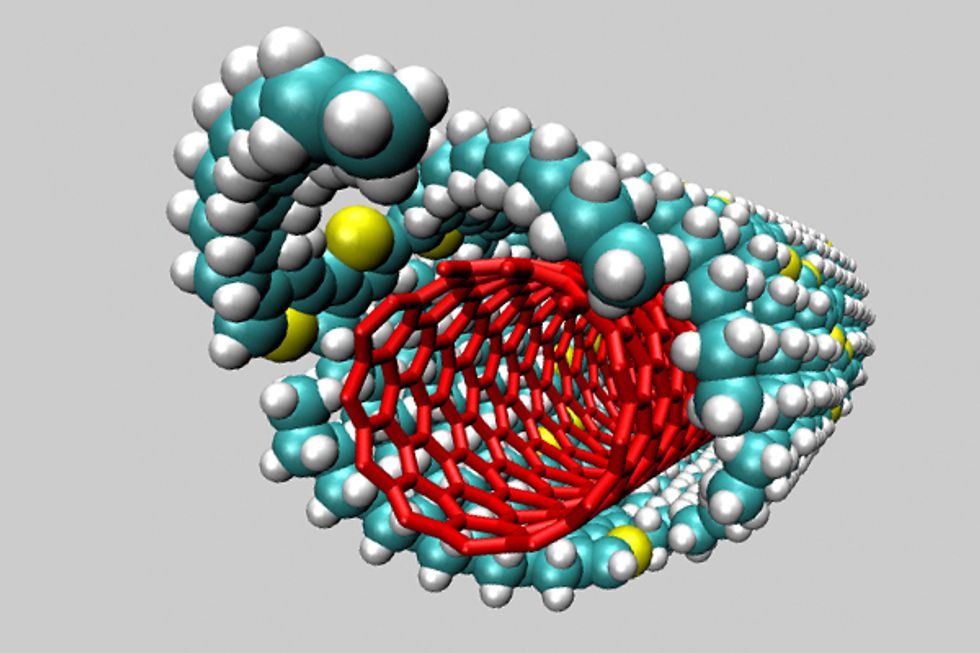Researchers attempting to use carbon nanotubes (CNTs) in electronics have faced many obstacles, but perhaps the two most fundamental problems have been: putting them where you want them to go and developing a process that promises a homogeneity of CNTs.
Researchers at the University of California Davis and Stanford University, led by Zhenan Bao, who has been using CNTs for creating pressure sensors for use in an artificial skin, along with the Samsung Advanced Institute of Technology have developed a process by which the semiconducting single-walled carbon nanotubes are separated out from a mixture.
The researchers published their work in the journal Nature Communications.
"Sorting has been a major bottleneck for carbon nanotubes to be viable for practical electronics applications," Bao said. "This work solves the problem of separating the conducting from the semiconducting nanotubes."
The method the researchers developed for carrying out this separation involves a polymer that wraps itself around the semiconduting and non-conducting CNTs. While researchers have developed polymers in the past that accomplish this, the problem with those polymers was that they insulated the CNTs and required extensive removal treatments to get the polymer off the CNTs.
This polymer does not need to be removed since it can be used as is as a semiconducting nanotube and polymer ink for use in printable electronics.
It is clear that Bao intends to use the semiconducing nanotube product for her work in flexible electronics.
"I'm especially happy that this polymer can now be used to sort nanotubes," Bao said. "It merges two very important materials together and makes a hybrid material that could be very useful for printed and flexible electronics."
Dexter Johnson is a contributing editor at IEEE Spectrum, with a focus on nanotechnology.




